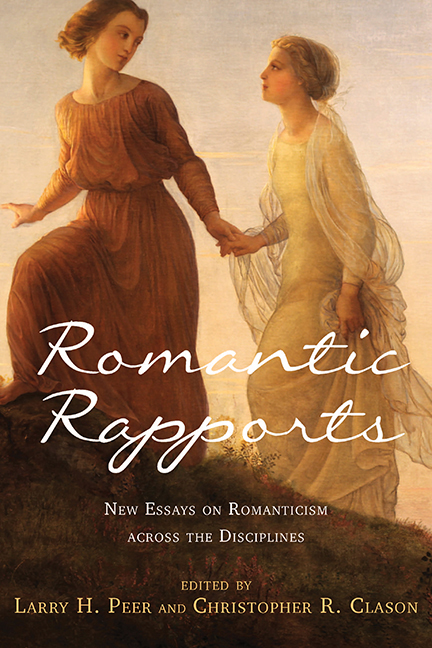Book contents
- Frontmatter
- Dedication
- Contents
- Acknowledgments
- Introduction: The Polyvalence of Romanticism
- Part I Romanticism and the Literatures
- Part II Romanticism, Music, and the Visual Arts
- Part III Romanticism and Science, Technology, Philosophy
- 7 A Romantic Scientist in Percy Shelley's Alastor
- 8 Canines and Other Quadrupeds: Human and Animal Relations Staged in Romantic Drama
- 9 Goethe and Individuation
- Notes on the Contributors
- Index
8 - Canines and Other Quadrupeds: Human and Animal Relations Staged in Romantic Drama
from Part III - Romanticism and Science, Technology, Philosophy
Published online by Cambridge University Press: 30 August 2017
- Frontmatter
- Dedication
- Contents
- Acknowledgments
- Introduction: The Polyvalence of Romanticism
- Part I Romanticism and the Literatures
- Part II Romanticism, Music, and the Visual Arts
- Part III Romanticism and Science, Technology, Philosophy
- 7 A Romantic Scientist in Percy Shelley's Alastor
- 8 Canines and Other Quadrupeds: Human and Animal Relations Staged in Romantic Drama
- 9 Goethe and Individuation
- Notes on the Contributors
- Index
Summary
JOHN BALDWIN BUCKSTONE and George Colman's burlesque burletta Hyder Ali, or, The Lions of Mysore was presented at the Adelphi Theatre in 1831. The title is somewhat misleading, as its principal subject is the rehearsal of a play that features various exotic animals as performers— lions, tigers, kangaroos, jackals, laughing hyenas, monkeys, pelicans, and boa constrictors. The play-within-a-play portrays the dramatic usurpation of Tipu Sultan Fath Ali Khan by the British. The director of this play, Yates, is forced to improvise when he learns that the expected animals have been offered higher salaries by a competing theater and consequently will not be available to perform. British audiences would be familiar with the history of Mysore and would also probably know that Ali's ubiquitous symbol was the tiger. Because there is no distinction between tiger and lion in Indian linguistics, as Kate Brittlebank points out, the words were interchangeable but clearly associated with Ali's reign and with Tipu warrior culture (262). Yates knows that his play, what he calls his “beastly piece,” must feature quadrupeds, and so in desperation he substitutes biped performers for quadruped performers. He tells the reluctant actors that they must don animal skins to avoid disappointing the public and financially ruining the stage manager.
The metatheatrical frame of this illegitimate drama gives us a glimpse of what had become popular dramaturgy from the late eighteenth century to the middle of the nineteenth, the staging of canines and quadrupeds. When asked whether the introduction of animals would not be derogatory to the respectability of their theater, Yates replies: “Not if the[y] bring money, money is respectability everywhere, besides we are illegitimate, we are allowed these spurious resources for entertainments, they are the legitimate property of the illegitimates” (scene 1). Because theaters were competing with entertainments that featured animal acts, such as Astley's Amphitheatre and Circus, Yates justifies his artistic decision in financial terms. In order to draw audiences away from the circus, illegitimate theater had to put animals on the boards—literally.
- Type
- Chapter
- Information
- Romantic RapportsNew Essays on Romanticism across the Disciplines, pp. 138 - 158Publisher: Boydell & BrewerPrint publication year: 2017



